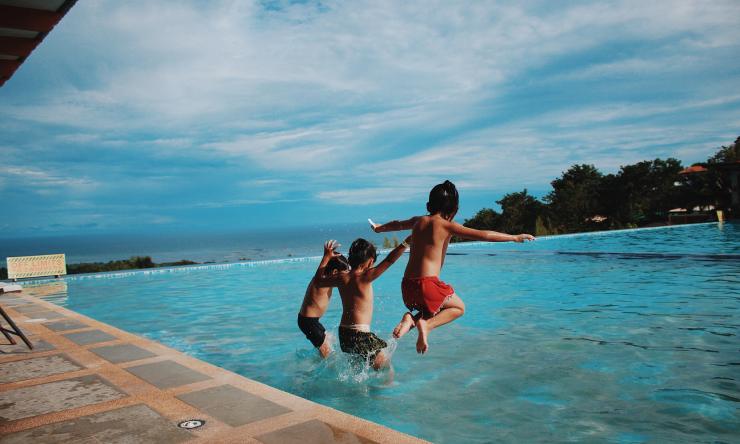Water safety guidelines to prevent drowning

Drowning fatalities among children in the summertime warrant water safety awareness but a Baylor College of Medicine expert explains that water safety must be practiced all year long, as drowning is silent, quick and can occur in the shallowest of waters.
Dr. Katherine Leaming-Van Zandt, associate professor of pediatrics – pediatric emergency medicine and medical director of Texas Children’s Hospital West Campus Emergency Center, advises parents of the dangers around water.
“The most important component of drowning is that it is completely preventable,” Leaming-Van Zandt said.
From 2005 to 2014, there was an average of 3,536 fatal, unintentional drownings that were non-boating related in the U.S. One in five that died from drowning were children ages 14 and younger. This is viewed as a public health crisis.
Parents must provide multiple layers of protection when around water, such as environmental safety precautions, child water education, adult supervision and emergency preparedness. Yards with a pool or hot tub should contain a four-sided isolation fence with self-latching closure that isolates the pool area from the house and yard, standing at least 4 feet tall. The latch should be at least 54 inches above the bottom gate.
“Remember that it’s not just about watching the kids from the periphery. Parents or caregivers should be within touching distance of kids when in the pool or near the water,” Leaming-Van Zandt said.
The false notion of safety when a child wears a flotation device is apparent around the pool or ocean. A life jacket is the only safety-proven equipment to wear. This goes for teenagers and adults who can swim as well, as weather conditions often defeat skilled swimmers.
“Even though it’s not the most comfortable or stylish, wearing a life jacket is one of the safest things you can do to prevent drownings from occurring, particularly near oceans, lakes and rivers,” Leaming-Van Zandt said.
Water-protecting equipment is crucial around the water, but drownings can occur inside the home, as well. A child can drown in an inch of water, so childproofing the home is essential. Such precautions include draining the bathtubs, covering the toilet seats and dumping out buckets of water after mopping the floor so children do not topple head first into them. Taking these measures can protect atypical, less-known drownings.
“If a child is found under water, know how to respond. After retrieving the child from the water, check to see if the child is breathing and has a pulse. If not, have another bystander call 911 and start basic life support and CPR immediately,” said Leaming Van-Zandt. “All parents and caregivers should take a CPR and/or water safety course. In times of emergencies, it can be life-saving.”
Never assume another parent, lifeguard or adult is watching your child, Leaming-Van Zandt stresses. People get distracted, especially in large groups, so assign a few adult supervisors to keep track of children near the water.
Although drowning seems to be more common among young children, teenage and adult swimmers also must take precaution when near bodies of water. Teenagers, in particular, are at high risk from drowning as they may engage in risky behavior and/or overestimate their swimming ability. Parents must continue the conversation about risk-taking behavior and what those risks entail, as well as making sure their kids are in a safe environment with adult supervision.
Enrolling children into swim classes allows them to recognize the dangers and safety precautions they need to take around water. Water classes for 6-month to 3-year-olds entail water acclimation, readiness and safety, bubble blowing and back floating. Children are not coordinated enough developmentally to swim until 4 or 5 years old, but earlier classes allow children to gain familiarity with the water. Preschool swim lessons for 4- to 5-year-olds start teaching children about water safety, survival skills and basic swim concepts.
“We always talk about it around the summertime, but drowning can happen any time of year,” she said. “Be aware and implement these safety precautions to keep your child safe not only when they’re young, but as they grow and develop into young adulthood.”










